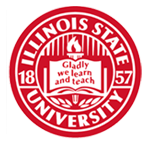Abstract
Purpose: This study sought to train cueing skills in first-year graduate students when working with bilingual children with speech sound disorders to ensure fidelity of intervention of a larger research investigation.
Method: Before explicitly training cueing skills, three students were randomly assigned bilingual clients that had been previously diagnosed with a speech sound disorder and asked to administer trial therapy. During the instructional phase, we gave students a cueing protocol, a scoring template, and feedback. We assessed performance according to challenge-point criteria and adherence to our cueing protocol.
Results: Performance varied per student, but overall scores were higher during the instructional phases than during the baseline phase for all students. Performance was also higher when the students participated in individual conferencing versus group conferencing.
Conclusion: Although the data are limited, the results suggest that a cueing protocol is supportive in establishing cueing skills in first-year graduate students administering speech sound intervention.
Recommended Citation
Irizarry-Pérez, C. D.,
Lugo-Neris, M. J.,
&
Martinez-Fisher, A.
(2023).
Establishing Cueing Skills When Treating Bilingual Speech Sound Disorders.
Teaching and Learning in Communication Sciences & Disorders, 7(2).
DOI: https://doi.org/10.30707/TLCSD7.2.1690393489.668023





